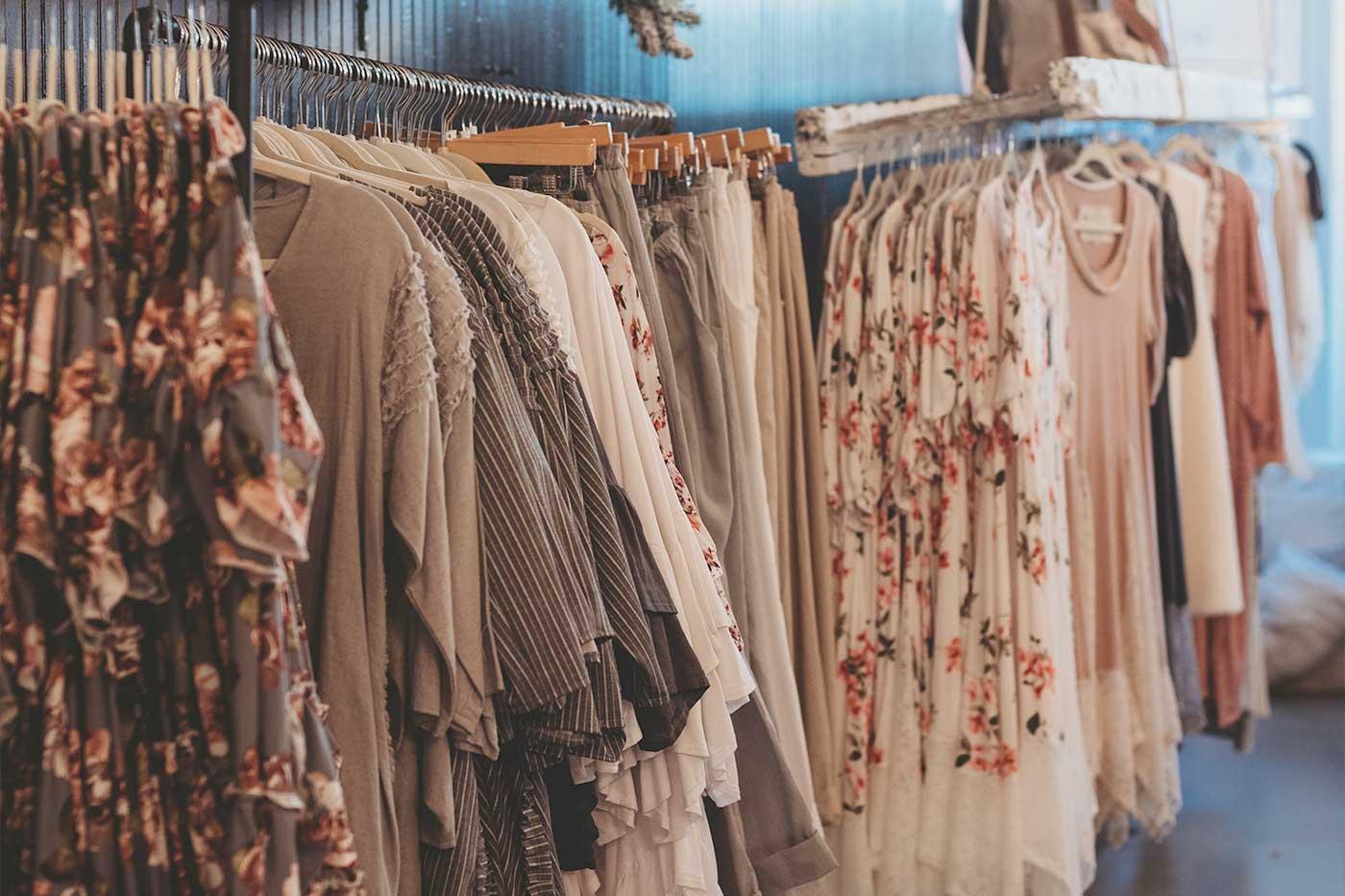The Influence of Social Media on Today's Boutique Fashion Trends
The Influence of Social Media on Today's Boutique Fashion Trends
Blog Article
Exploring the Advancement and Impact of Clothes on Modern Style Trends
The development of garments has actually considerably affected modern-day fashion fads, combining historical criteria with advanced advancements. Renowned figures like Coco Chanel and Yves Saint Laurent revolutionized the fashion business by introducing ideas that focus on convenience and access, which proceed to resonate today. Technological strides in areas such as 3D printing and smart fabrics are redefining layout opportunities and customer experiences (boutique fashion). In addition, the expanding focus on inclusivity and sustainability is improving sector criteria. As we take into consideration these complex impacts, one have to wonder about just how these aspects collectively redefine fashion's role in reflecting and shaping contemporary culture.
Historical Style Influencers
In the tapestry of style background, certain figures have actually left an indelible mark, shaping the fads and styles that specify entire periods. Coco Chanel, a cutting edge designer, redefined ladies's fashion by presenting comfortable, sophisticated clothing that departed from limiting corsets.
Elsa Schiaparelli is one more crucial figure, renowned for her progressive designs that included surrealist art, collaborating with Salvador Dalí to produce wayward pieces that tested conventional visual appeals. Her cutting-edge use color and bold patterns resounds in modern style. Yves Saint Laurent, at the same time, equalized high style with prêt-à-porter collections, bringing runway styles to the masses and setting a precedent for modern ready-to-wear lines.
These visionaries, among others, not just revolutionized style in their times yet additionally established sustaining patterns that reverberate in today's garment industry, offering a structure whereupon modern-day developers proceed to build and innovate. Their traditions highlight the relevance of creative thinking and daring in fashion's ever-evolving narrative.
Technological Improvements in vogue
Among the vibrant landscape of the fashion business, technical innovations stand at the forefront of innovation, reshaping how designers create and consumers engage with fashion. The integration of 3D printing has actually revolutionized design processes, enabling designers to try out complex structures and lasting products that were formerly impossible. This modern technology promotes quick prototyping, lowering waste and speeding up production times.

Smart textiles, installing innovation into textiles, are likewise changing the market. Technologies like temperature-regulating and self-cleaning materials provide boosted functionality and comfort. Wearable modern technology, integrating attributes like fitness tracking and interaction, includes a new dimension to style, merging looks with practicality.
Cultural Shifts and Style
As technological innovations remain to reshape the fashion business, social changes are just as significant, redefining design and consumer choices. In the last few years, the surge of social media sites systems has actually sped up the dissemination of worldwide fashion trends, allowing varied cultural impacts to exist side-by-side and merge. This electronic interconnectivity has actually promoted the quick exchange of concepts, resulting in a more eclectic and comprehensive interpretation of style that mirrors the complex nature of contemporary society.
Cultural recognition and admiration have actually triggered designers to attract motivation from a wider spectrum of historical and ethnic contexts, integrating traditional concepts with contemporary looks. This combination has caused style that resonates with a wider target market, promoting a sense of identification and try this site belonging across different demographics. In addition, the enhancing demand for personalization has actually driven brands to offer personalized choices, enabling consumers to reveal uniqueness while reflecting their social heritage.
Additionally, moving social values have actually affected fashion, with inclusivity and variety ending up being main themes. The sector has started to accept models and influencers of different type of body, ethnic backgrounds, and gender identifications, challenging traditional elegance requirements. This transformation highlights the power of social shifts fit the future of fashion, as style becomes a much more genuine expression of personal and cumulative identification.
Sustainability and Modern Design
While the style sector proceeds to advance, the important for sustainability has actually come to informative post be increasingly urgent, influencing modern style methods. The surge of slow-moving style, which stresses quality over amount, encourages consumers to spend in classic items instead than transient fads.
In addition, contemporary design is identified by its advancement in reducing waste and advertising circularity. This technique not only minimizes ecological impact yet likewise enhances the social obligation of fashion residences.

Future Trends in Style

Sustainability will certainly proceed to be a driving official source force in forming future fashion trends. The sector is progressively taking on green materials and moral production approaches, reacting to an expanding consumer need for liable practices. Innovations such as bio-fabricated products and closed-loop recycling systems are readied to redefine just how clothing is generated and consumed, minimizing environmental effect while maintaining design and quality.
Social changes, including the surge of inclusivity and diversity, will certainly also play an essential duty. As society ends up being more conscious of social concerns, fashion is expected to come to be a system for expression and change. Designers will likely concentrate on creating collections that show a more comprehensive variety of identifications and experiences, championing representation and availability.
Conclusion
The development of clothes substantially affects contemporary fashion trends, where historic impacts combine with contemporary designs. This ongoing advancement emphasizes style's function as a mirror to societal values and technical innovation, recommending a future rich with innovation and inclusivity.
The evolution of apparel has actually substantially influenced modern style patterns, merging historic criteria with advanced innovations.Among the vibrant landscape of the fashion industry, technical improvements stand at the forefront of innovation, improving how developers produce and consumers involve with fashion.While the style market continues to progress, the imperative for sustainability has actually ended up being increasingly immediate, influencing modern-day design techniques. As sustainability ends up being ingrained in contemporary layout, it leads the way for an extra conscious and liable fashion sector.
The evolution of apparel substantially impacts contemporary fashion patterns, where historical influences combine with contemporary layouts.
Report this page